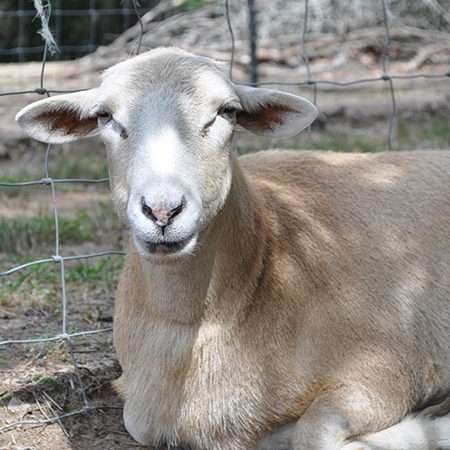Barbados Sheep
Ovis aries
Barbados sheep is a breed of domesticated sheep, that have a range spanning across twenty-five countries on three continents. They can be found in the Americas, Asia, and Europe. It’s most abundant in the Caribbean region, in Mexico and in Peru. This breed is raised primarily for meat, but can be found as pets in some countries. Their origins are likely tied to African ancestry, with strong evidence that the breed as seen today, was developed by the people of the Caribbean island of Barbados. They were first developed by the people on the island from sheep brought by early European settlers. As of 2015 the total world population was estimated at about 158,000, with the U.S. having 1,971 registered sheep in 2014.
In 1904, the USDA imported a small flock for study. From the original flock, two distinct breeds have emerged in the U.S. Purebred Barbados Blackbelly sheep are polled (hornless). The horns were gained by crossbreeding the Barbados Blackbelly with Mouflon and Rambouillet sheep.
Barbados sheep have a goat like appearance, but are a known true sheep. They are able to tolerate heat and exhibit more stamina than most breeds of sheep. They are light on their feet and in some ways resemble deer, when roaming around. They are known as “hair sheep”, meaning they don’t grow wool, but rather have coarse hair. They can sometimes develop a wool undercoat, that is shed in the springtime. Barbados sheep breed all year round. They are very disease resistant and parasite tolerant, these genetic traits have created a demand for Barbados sheep.
Say Hello To Cub Creek's Sheep: Sahara & Princess
All tan, like a desert, Sahara is one of camp’s female hair sheep. She is laid back and sweet and loves to graze and nap Sahara is a polled sheep, meaning she doesn't have her horns. Distinguished by her dark legs, Princess certainly fits her name with her regal attitude. She has her horns resembling a crown atop her head. She loves to sit back and watch the action, but will be willing to come up to you for a treat.

Barbados Sheep are a domesticated breed originating on the Carribbean island of Barbados. They've been transported on boats to other Carribbean islands, and the Americas.
HABITAT -They thrive in the hot, humid environments of the Caribbean. Can also do well in cooler climates.
DIET -Sufficient amounts of grass for grazing can sustain them, supplemented by hay. In the wild will also eat tree and plant leaves.
FUN FACT -These sheep don’t produce wool, and are known to have coarse hair.
SOCIAL BEHAVIOR -The sheep live in flocks, and are domesticated by humans.
ACTIVITY -Barbados sheep are diurnal, active during the day and sleeping at night.
PREDATORS - Predators include coyotes, wolves, foxes, bobcats, and wild dogs.
SIZE -Rams (males) weigh between 90 - 150 lbs and ewes (females) weigh between 70 - 120 lbs.
RELATIVES -Purebred Barbados Blackbelly Sheep are related to the American Blackbelly and Horned Blackbelly breeds.
CONSERVATION -Barbados sheep are categorized as a Not Listed species by the IUCN.
Cub Creek Animal Care Information
Housing - Our Barbados Sheep thrive in open pasture environments, with lush green fields for grazing. The pastures are enclosed with fencing to keep predators out, and provide a covered area to take shelter in extreme weather. We provide automatic water dispensers that always keep fresh water for them.
Diet - The majority of our Barbados Sheep’s diet consists of allstock and hay. This provides well balanced nutrition, supplemented by lush grasses they graze on. The food is provided to them in hanging food bucket containers, a feed trough, and hay feeders. Sometimes they enjoy special treats of various vegetables!
Enrichment - We love our sheep and provide them with plenty of enrichment. Scatter feeding is a technique we use to help make mealtimes last longer, and allows them to eat slower. Since the food is more spread out rather than in one large pile, they must do a bit more foraging. We also give them livestock balls to play with, and they live in the same pasture as our goats with their goat playground! We also like to let them roam and explore outside of their regular grazing areas.

